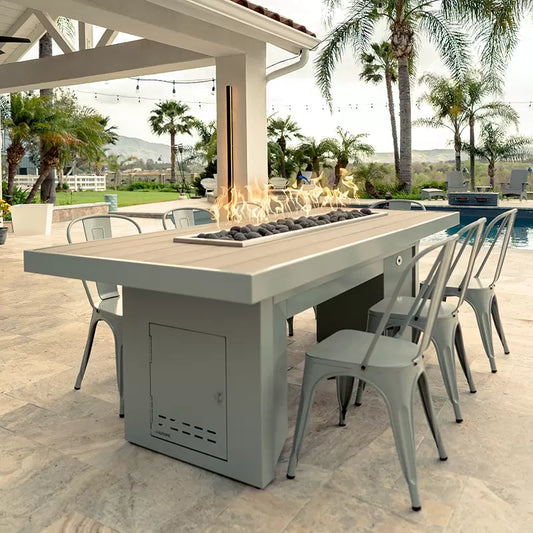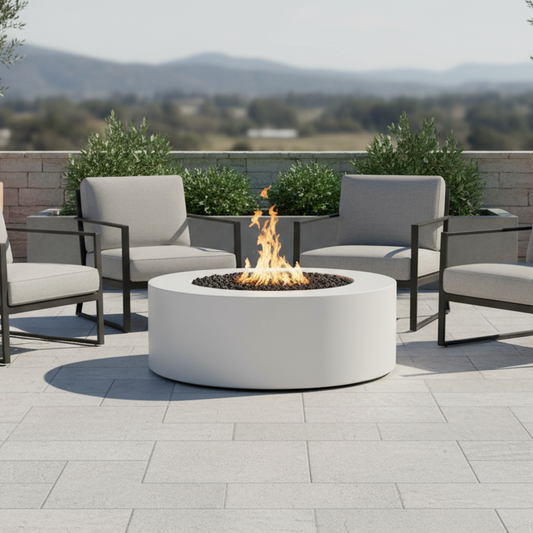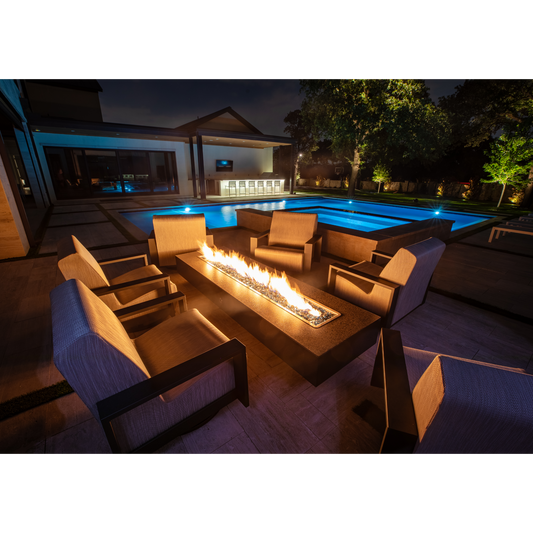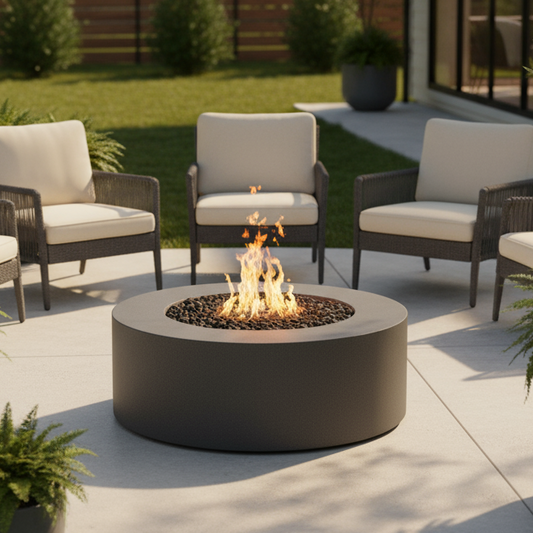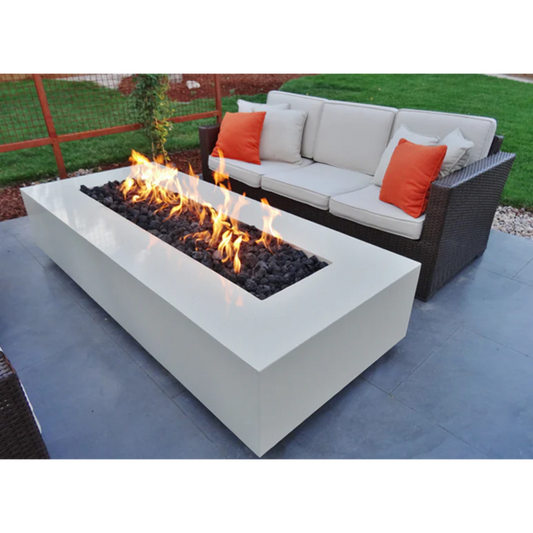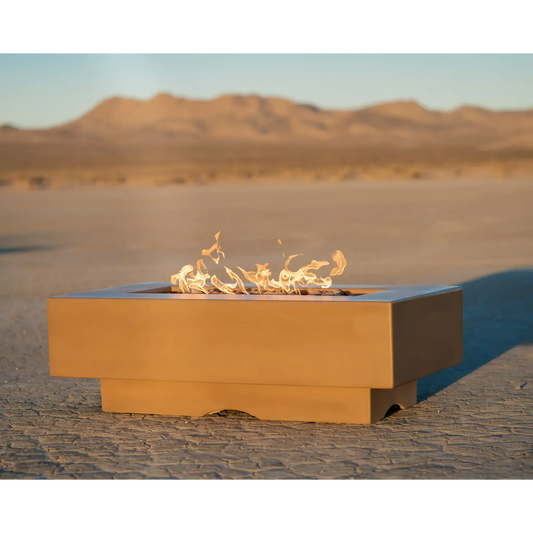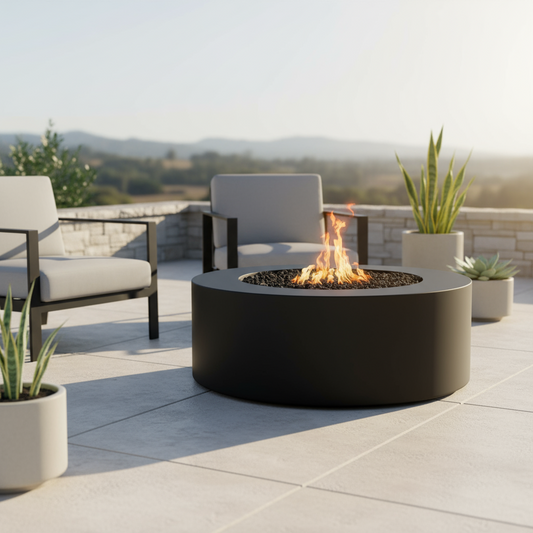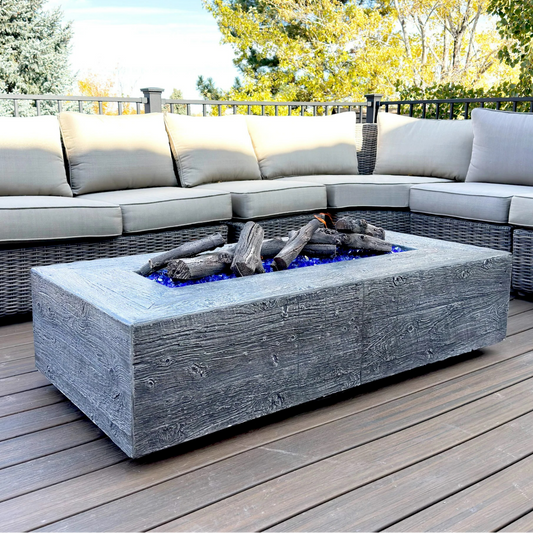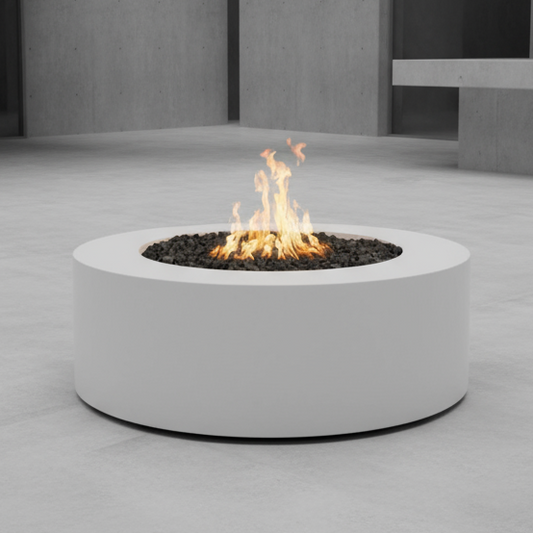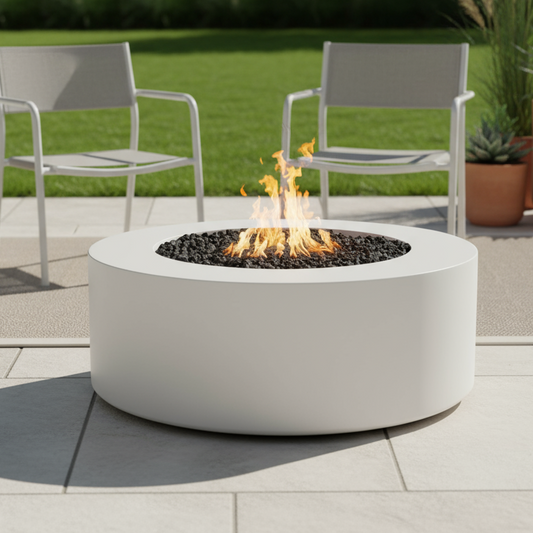Outdoor Fire Pit Table: Setup & Maintenance

Share
An outdoor fire pit table can turn your patio into a year-round gathering spot—but only if it’s set up and maintained the right way. From choosing a safe location and the right fuel source to staying on top of cleaning and seasonal care, a little planning goes a long way toward keeping your fire pit table both safe and inviting. This guide walks you through the essentials of setup and maintenance so you can spend less time troubleshooting and more time enjoying the flame.
Want an all-in-one overview on choosing a fire pit? Head over to our Complete 2025 Guide before you shop, here: Fire Pits & Fire Pit Tables : Complete 2025 Buyer’s Guide.We broke down sizes, shapes, fuel options, and safety rules so you can shop with confidence. Then circle back here to fine-tune layout clearances and heat zones.
Comparing styles? Browse our Fire Pit Tables to see what works best for your patio.
TL;DR (what to do first)
-
Pick a spot with airflow and overhead clearance. Keep soft goods and vertical surfaces out of the immediate heat zone; always follow your model’s manual for minimum distances.
-
Decide fuel: portable propane or fixed-line natural gas for an outdoor gas fire pit table. (Propane = flexibility; NG = permanent convenience.)
-
Level, non-combustible surface; leak-test with soapy water; stabilize flame with a glass wind guard if your site is breezy.
- Care cadence: 10-minute pre-season check, 5-minute monthly wipe/inspect, 20-minute deep clean each quarter, and cover when not in use.
Table of Content
- Site & surface: the “Good Fit” check
- Fuel & ignition basics (propane vs NG)
- First-time setup: a 45-minute checklist
- Quick comfort tune-ups (5 minutes each)
- The 3–5–20 Care Plan (easy to remember)
-
Troubleshooting: two common problems
-
Special setups & FAQs
- Taking Action
1. Site & surface: the “Good Fit” check
Start with airflow and walkways. Choose a place that feels open when chairs are pushed back and people are circulating. You want a level, non-combustible surface (stone, concrete, tile, pavers) rather than bare grass or resin rugs. If you’re placing an outdoor table with fire pit in the middle under a pergola or near rails/fencing, confirm vertical and lateral clearances in the manual and give yourself a little extra room as a comfort buffer.
Deck note: Many models can be used on wood or composite decks with the right stand, pad, and overhead clearance. When in doubt, add a heat-resistant pad and verify your local rules.
Windy patio? Position rectangles so the long side faces the breeze and add a glass wind guard to stabilize the flame and protect soft goods.

2. Fuel & ignition basics (propane vs NG)
Propane (LP): Hides in-table on many models, easy to move, quick to install. Swap tanks as needed. Great for renters or seasonal rearrangers.
Natural Gas (NG): Runs from a fixed line; no tank swaps and lower per-hour cost for frequent use. Plan the line path and hire a licensed installer.
Ignition types you’ll see:
-
Match-lit/manual: open valve, light, and adjust. Simple, durable.
-
Push-button/spark: click-to-ignite convenience.
-
Electronic: push-button, wall switch, or remote ignition on premium units.
Whatever the system, verify that the gas flows freely and the burner lights cleanly before the first gathering.
Planning to “DIY outdoor fire pit table” or try a “fire pit table DIY” gas build? For safety, leave gas line sizing, regulators, and pressure checks to a licensed pro; keep your DIY to the landscaping or enclosure if you go that route.
Have a look at our dedicated guide—Gas Fire Pit Tables: Natural Gas vs Propane (Costs & Installation)—that breaks down the differences between natural gas vs. propane fire pit tables, explaining installation, heat output, operating costs, and flexibility so you can choose the best option for your outdoor space.
3. First-time setup: a 45-minute checklist
-
Unbox & inspect: confirm no shipping damage; verify media and parts list.
-
Level the base: shim if needed—an unlevel table produces uneven flame.
-
Connect fuel: hand-tighten propane connections (don’t over-torque) or attach to NG quick-connect if your installer provided one.
-
Leak test: 1:1 dish soap/water on all joints. Bubbles = shut everything down and re-seat; call a tech if it persists.
-
Add media: pour glass/lava to the depth specified (too much can choke the flame).
-
Test-fire: run 10–15 minutes on medium to burn off oils; check ignition relight and flame stability with/without wind guard.
- Place seating: set chairs where warmth hits torso (not just shins). (See our seating/height spoke for pairings.)

4. Quick comfort tune-ups (5 minutes each)
-
Flame feels weak? Confirm the tank is >25% full (LP), open the valve fully, and make sure the glass media isn’t piled over the burner ports. Add a heat deflector if your table supports one.
-
Flame lifts or sputters in wind? Add/adjust the glass wind guard and rotate seating to the leeward side.
- Soot on the tabletop? Lower flame height slightly and clean media; soot can indicate disrupted airflow.
5. The 3–5–20 Care Plan (easy to remember)
Before the season (≈10 minutes):
-
Wipe the surface; check level and leg bolts.
-
Inspect the burner and tray; vacuum out dust/spider webs.
-
Replace batteries in electronic/spark ignitions.
-
Leak-test after reattaching tanks or lines.
Monthly quick-care (≈5 minutes):
-
Dry wipe the surface; check that the outdoor gas fire pit table ignites on the first try.
-
Stir/redistribute media so ports aren’t buried; spot-vacuum crumbs/ash.
-
Verify cover is intact and vents are clear.
Quarterly deep clean (≈20 minutes):
-
Remove media, vacuum the pan, and clean burner ports (soft brush or compressed air).
-
Wash the glass media in warm soapy water, dry thoroughly, and reinstall at the specified depth.
-
Check hoses/regulator (LP) for cracking; confirm NG quick-connect clicks securely.
-
Clean and condition concrete or metal finishes per the care tag.
Off-season: Cap/cover the burner and use a fitted cover—especially in freezing or rainy climates. Store spare LP tanks upright outdoors.
6. Troubleshooting: two common problems
Problem: The flame won’t stay lit or keeps going out.
Likely causes & fixes:
-
Wind tripping the flame: add a wind guard; lower the flame height slightly.
-
Thermocouple/igniter not aligned: adjust per manual so the sensor sits in the flame.
-
Low tank pressure or frozen regulator (LP): warm the regulator gently and try again; swap in a fresh tank.
-
Clogged orifice/burner ports: deep clean the pan and ports.
For recurring issues, see our dedicated “Not Staying Lit?” checklist in the maintenance cluster.
Problem: Sooting or glass “pops”.
Likely causes & fixes:
-
Media piled too high over ports—redistribute to spec.
-
Contaminants (spills, sand, mulch) in the pan—remove, clean, and reinstall media.
- Excess flame height or poor airflow—lower the setting and check that vents aren’t blocked.
7. Special setups & FAQs
Can I use a dining table with a fire pit in the middle?
Yes—many dining-height models incorporate a central burner. Prioritize overhead clearance, stable chairs, and a wind guard so the flame stays steady while people eat. (See our “Shapes & Heights” spokes for seating matches.)
Is an NG line worth it vs propane?
If you entertain often and the table’s location won’t change, NG is great: no refills, consistent pressure. If you like to rearrange or you’re in a rental, stick with propane.
What about a DIY build?
Landscaping and enclosure work can be DIY, but gas design, regulators, and ignition wiring should be pro-installed for safety and warranty coverage.
Outdoor fire pit vs fire pit table—maintenance differences?
Freestanding outdoor fire pit bowls (wood-burning) require ash removal and spark control; fire pit tables are cleaner but need periodic burner/media care and gas leak checks.
8. Taking Action
Ready to set yours up with confidence—or bring an older unit back to life? Use the 3–5–20 care plan above, then browse Fire Pit Tables and Fire Pit Accessories to complete your setup. For choosing size, shape, and fuel (and how to place an outdoor table with fire pit in the middle), jump to the hub: Fire Pits & Fire Pit Tables : Complete 2025 Buyer’s Guide

